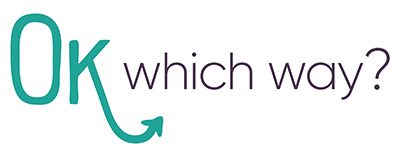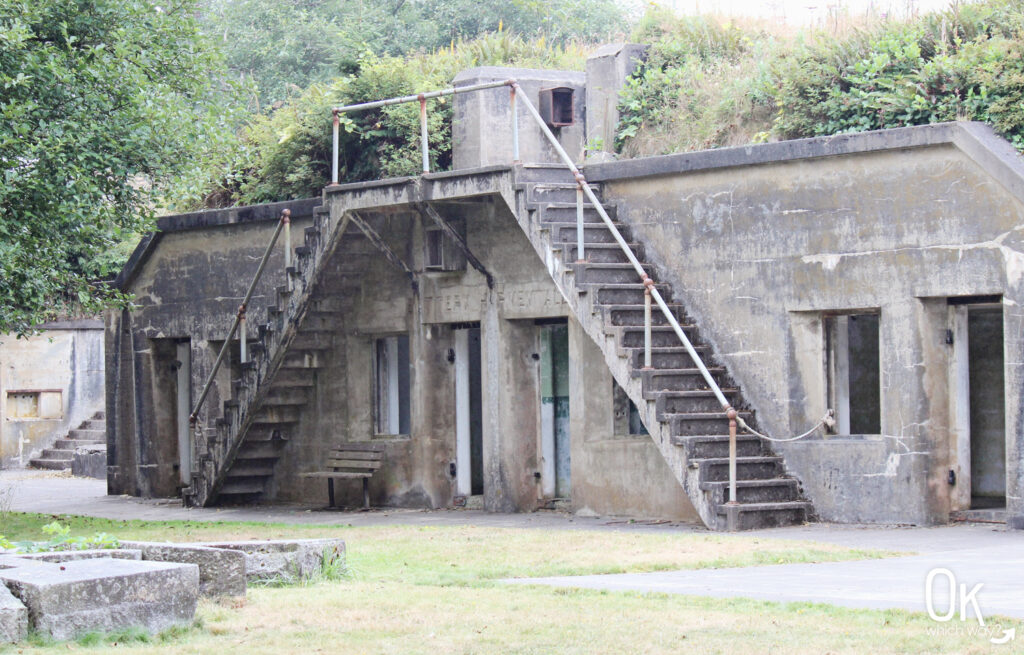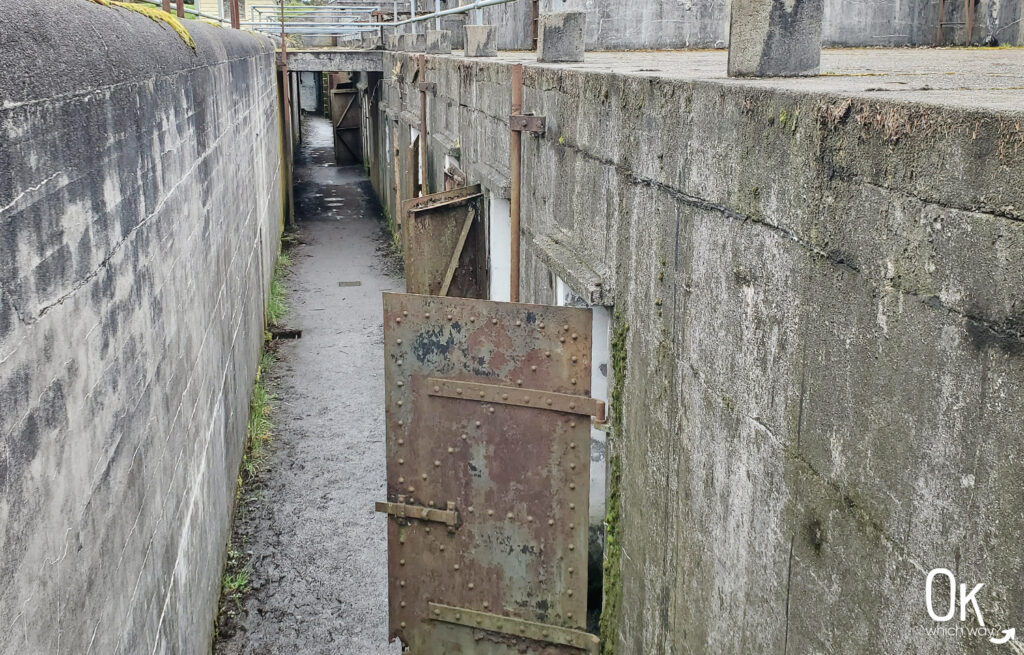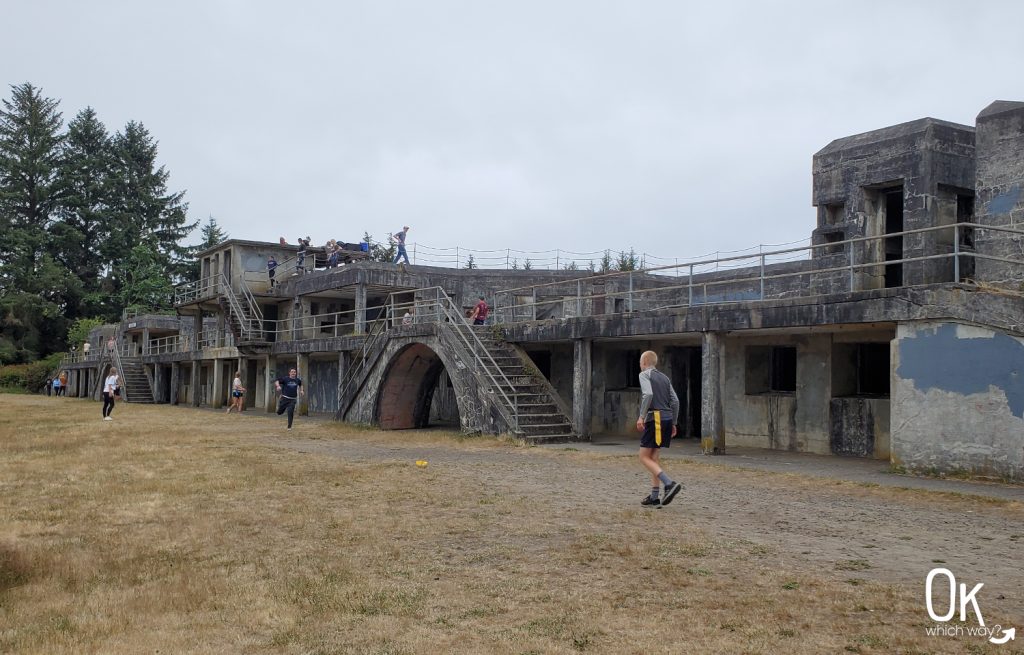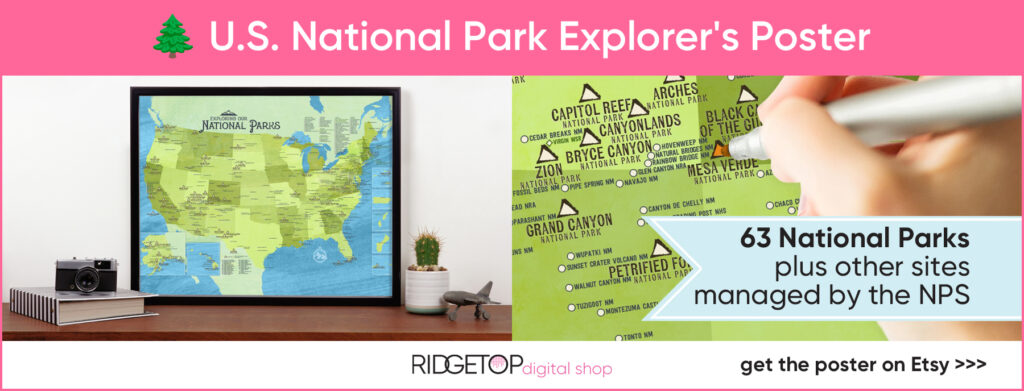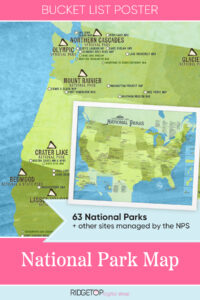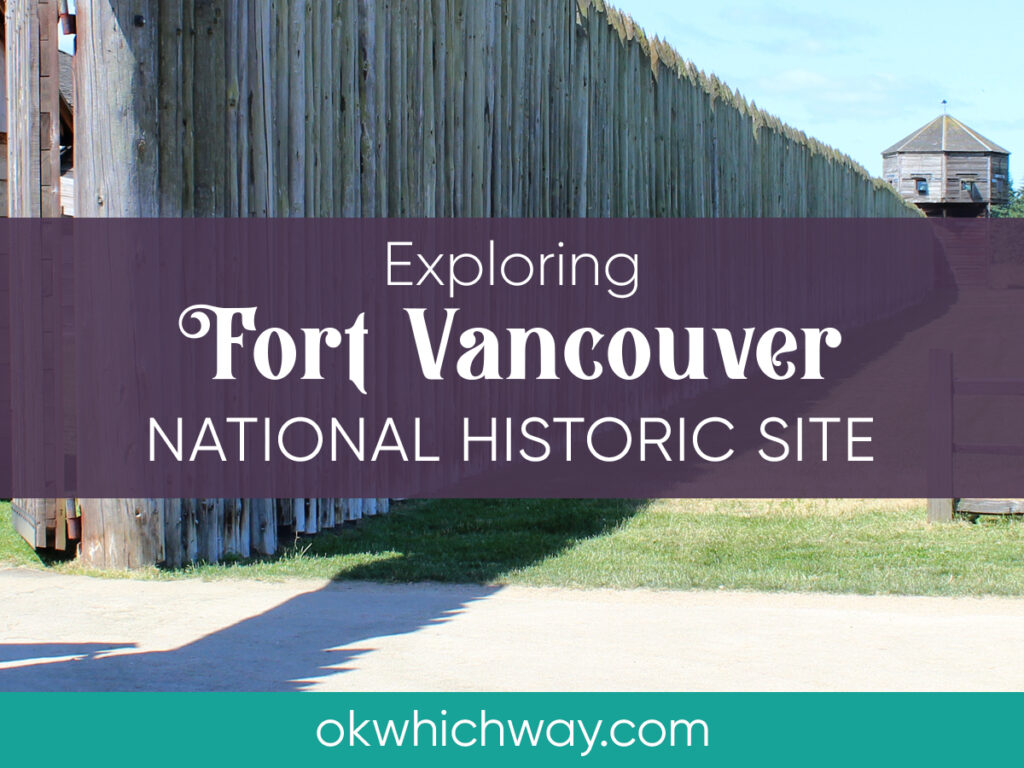
Exploring Fort Vancouver National Historic Site
Built in 1829, Fort Vancouver was once the most important settlement in the Pacific Northwest. It was the headquarters for the Columbia department of Britain’s Hudson’s Bay Company and primarily used for fur trade.
This post may contain affiliate links. When you make a purchase using one of these affiliate links, we get paid a small commission at no extra cost to you.
The historic site in Vancouver includes an interactive replica of the fort, a visitor center, barracks, and the Pearson Air Museum. Also part of the unit, but located in Oregon City, is The McLoughlin House – home to Dr. John McLoughlin who was the chief factor at Fort Vancouver for 20 years.
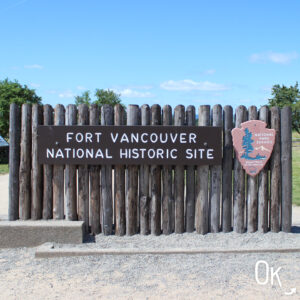
Park Info
Location: Vancouver, Washington
Established: 1948
Elevation: 35′
Things to See: Fort replica, U.S. Army’s Vancouver Barracks, Pearson Air Museum
Things to Do: explore the fort replica, become a Junior Ranger, walk along the many paths
Lodging/Camping: None
Dogs: Pets are allowed in some areas of Fort Vancouver, such as Officers Row and the Barracks. However, they are not allowed within the reconstructed fort.
Entrance Fee: $10/ages 16+. click here to see current fee pricing
FORT VANCOUVER REPLICA
In 1866, the Hudson’s Bay Fort Vancouver was destroyed in a fire. Beginning in 1947, the National Park Service began preserving the old fort. Today we can visit the reconstruction of the fort and go inside many of the rebuilt 1800’s era buildings.
I was impressed with the fort and thought the reproduction was very well done. There were many buildings for us to explore and I especially liked the living museum aspect with people working in the shops.
PALISADE
Entrance to the fort with the bastion at the end. This palisade was used to protect the fort from theft, not battle.
PALISADE: a wall of logs used to protect a fort
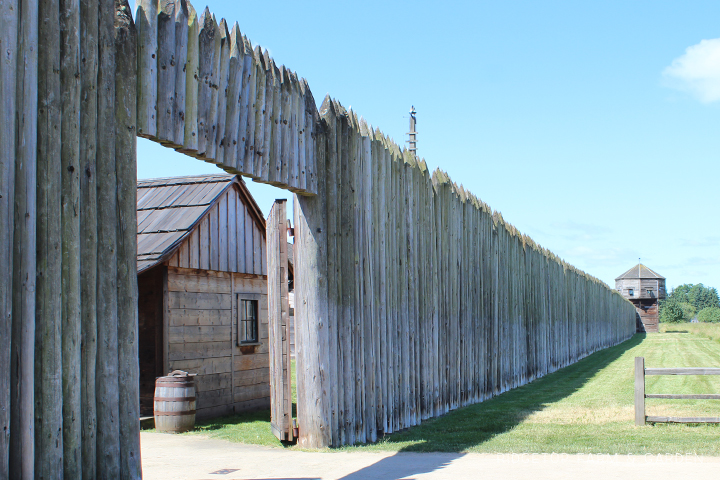
BASTION
There was only one bastion built to protect Fort Vancouver. The original was built in 1845. We were able to go inside the reconstructed bastion and peek out at the grounds.
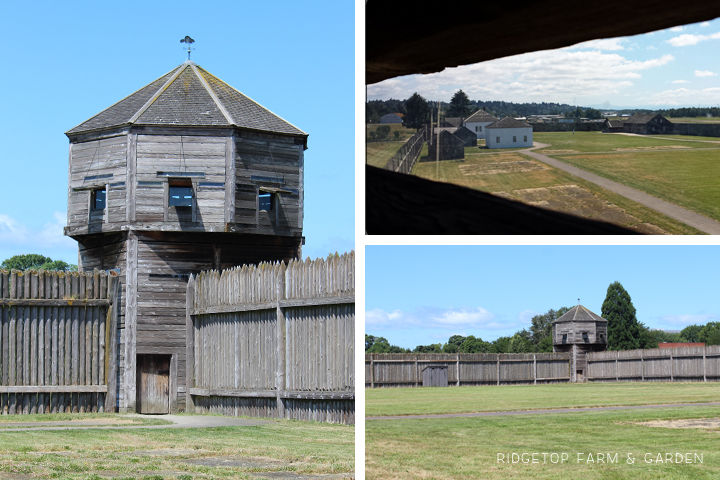
Mt. St. Helens in the distance.
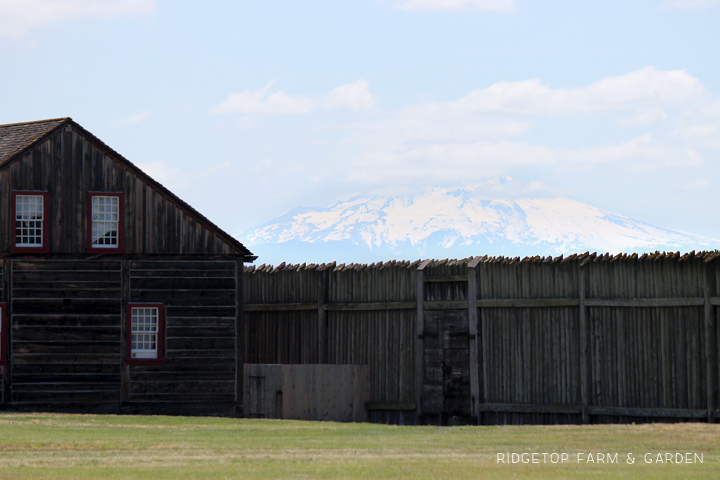
KITCHEN
We arrived at the kitchen as the cook was getting his ingredients together.
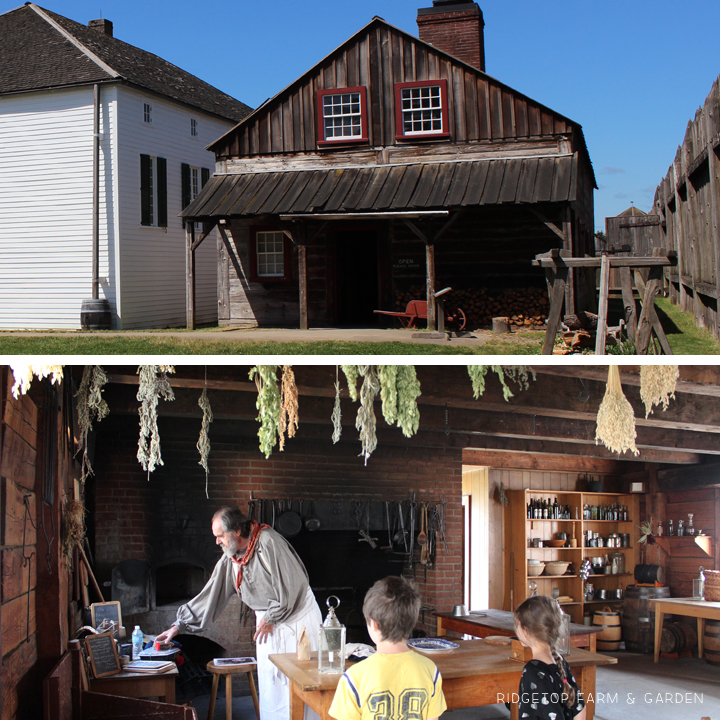
BLACKSMITH SHOP
Inside the blacksmith shop was a man who explained how coal was used for blacksmithing and showed us an old beaver trap, as well as excavated nails found at Fort Vancouver.
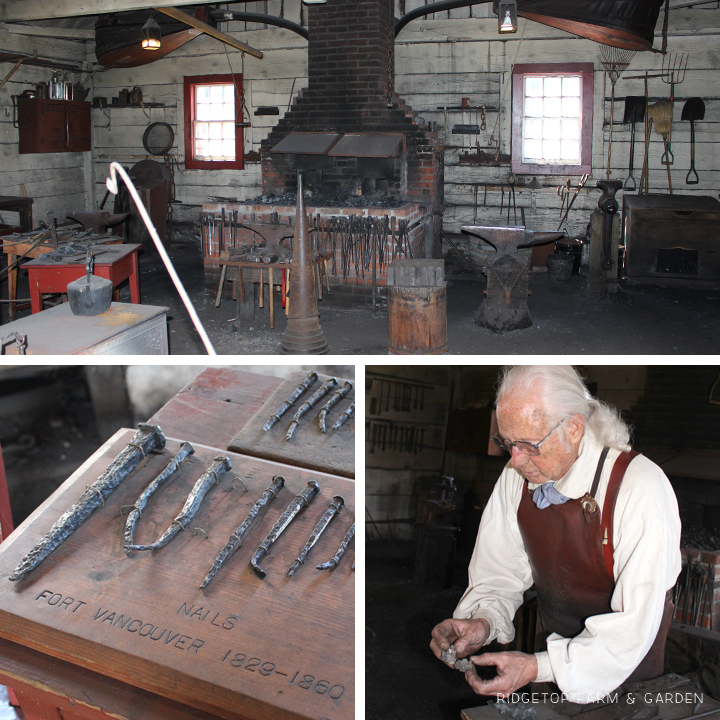
CARPENTER SHOP
There were two carpenters in the shop when we stopped by. One continued to work and the other answered questions the kids asked.
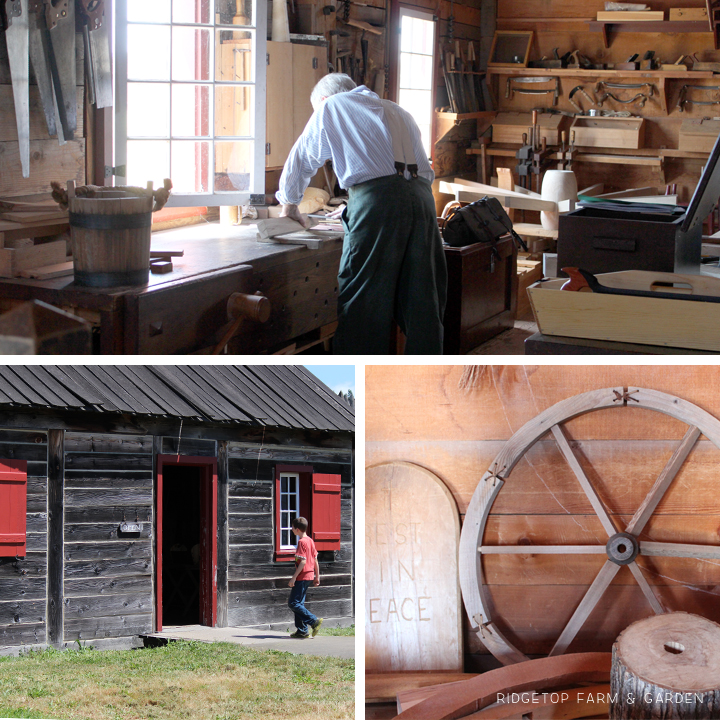
WELL & WASH HOUSE
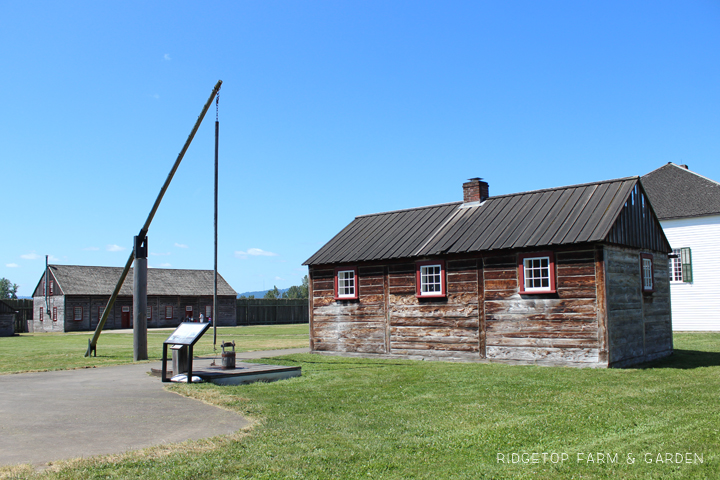
PRISON
The jail was minimal with a tiny peephole.
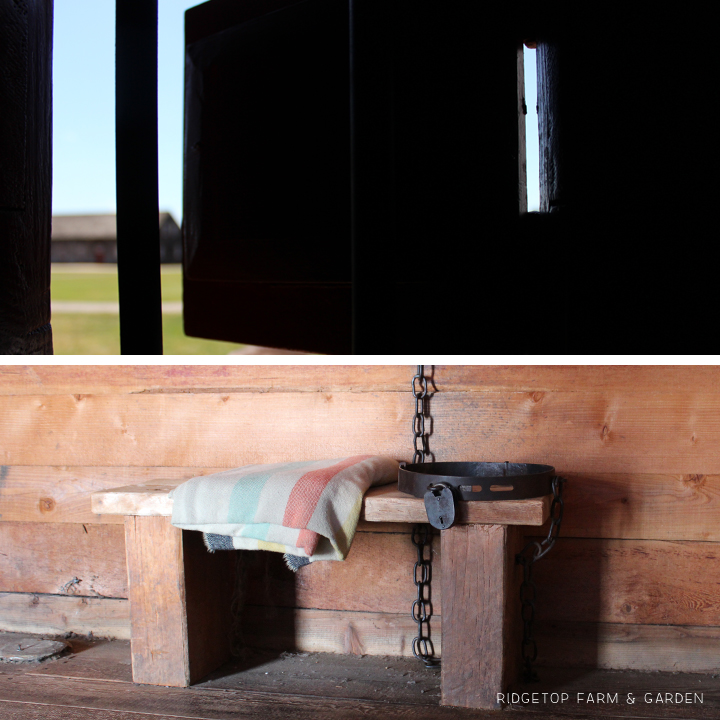
CHIEF FACTOR’S RESIDENCE
This was the home of the chief factor in charge of Fort Vancouver. Sometimes it was referred to as the Big House. Dr. McLoughlin was here from 1825-1845.
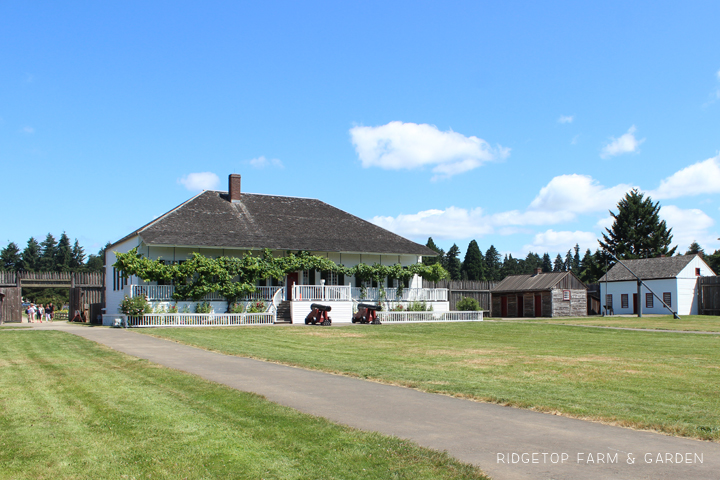
COUNTING HOUSE
The Counting House was where the financial records were kept. Today there are interactive activities for the kids to explore.
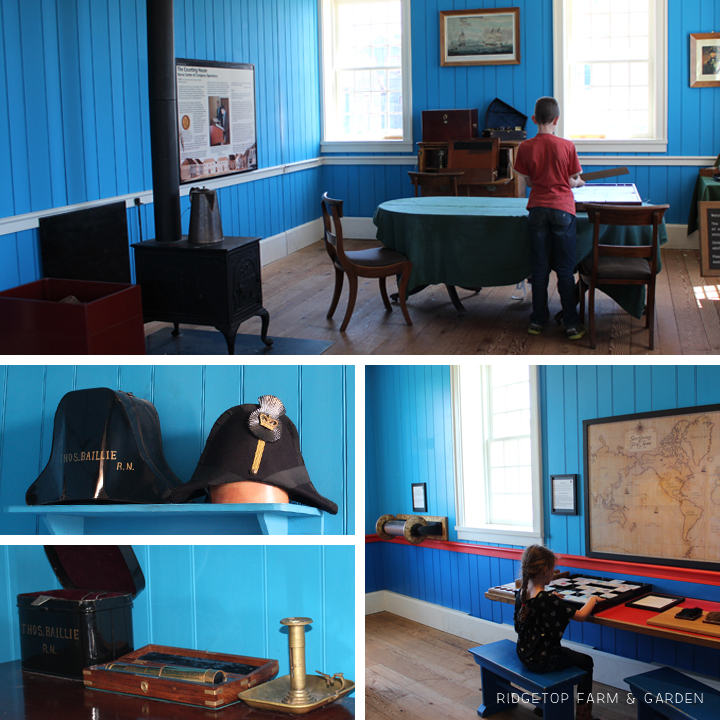
I found this intriguing. It’s a map of Sea Routes of the Fur Trade, 1785-1860
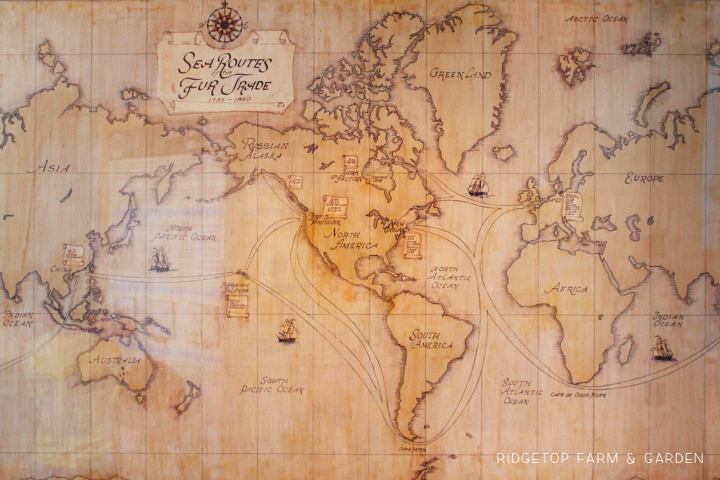
BAKEHOUSE
An oven inside the Bakehouse used to bake bread and biscuits.
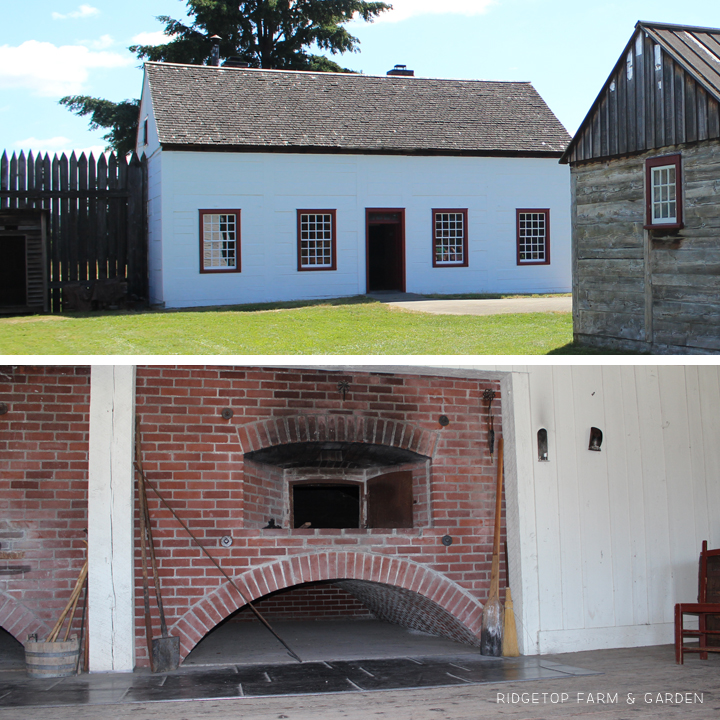
FUR WAREHOUSE
The furs collected throughout the region were brought here to be cleaned and pressed before being sent to England.
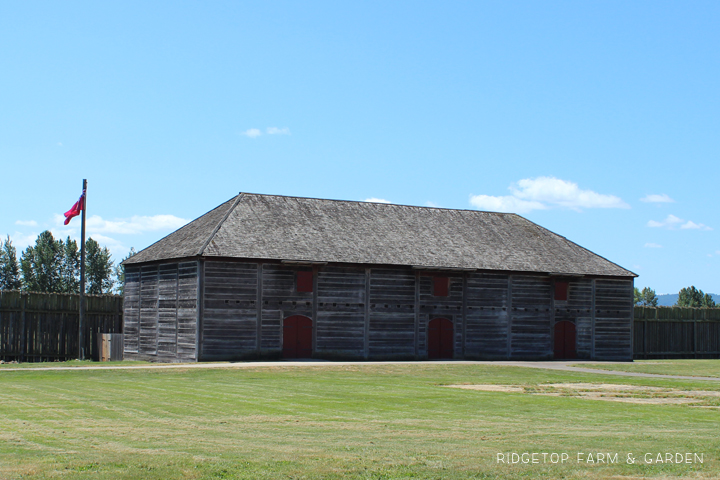
INTERPRETIVE GARDEN
Back in the early-mid 1800’s Fort Vancouver was a booming fur trade center, owned by the Hudson’s Bay Company. At it’s prime, outside the palisade walls, were 8 acres of land used for growing grains, vegetables, fruits, herbs & ornamental flowers. The Hudson’s Bay Company has since vanished, as did the garden. The Fort is being restored and the garden has been recreated, but at a smaller scale.
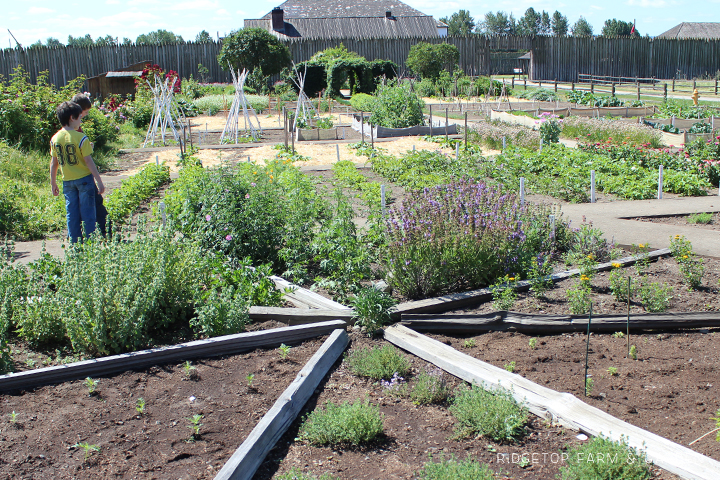
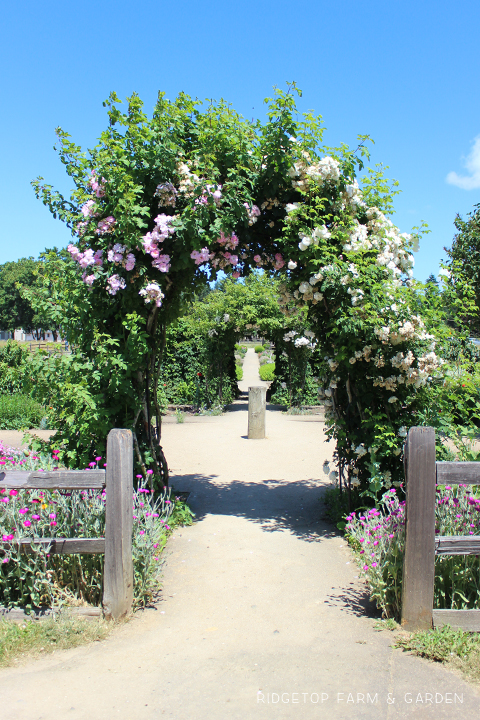
OFFICERS ROW
Officers Row is a tree lined street that once held the homes of US military officers of the Vancouver Barracks. The homes are still standing, but are no longer used for military personal. A couple of the homes are open to the public, others are residential homes.

VANCOUVER BARRACKS
In 1846, Oregon Country was divided so that north of the 49th parallel belonged to the US, which meant the Britain based Hudson’s Bay Company soon moved out. In 1849 the US Army established a post just slightly above the Fort. By 1866 all the buildings at the Fort were destroyed.
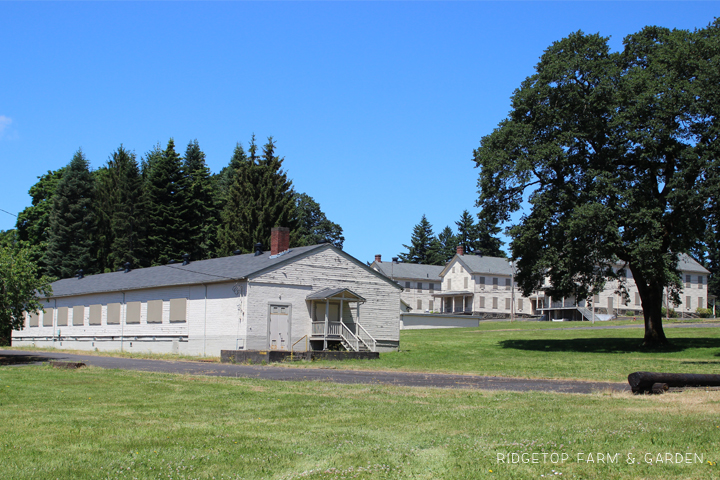
LETTERBOXING
We even found time to do a little letterboxing while at the Fort. A couple weeks prior we collected a hitchhiker from a letterbox. We placed it in a letterbox we found at Fort Vancouver.
HITCHHIKER: extra stamp and logbook found in a letterbox meant to be taken and placed somewhere else

We had a great time during our couple hours exploring the fort and garden. I know I learned as much, if not more, than the kids. It’s definitely on my list of places to return to.
Thinking About Exploring Fort Vancouver?
Pin This to Help Plan Your Trip ⬇
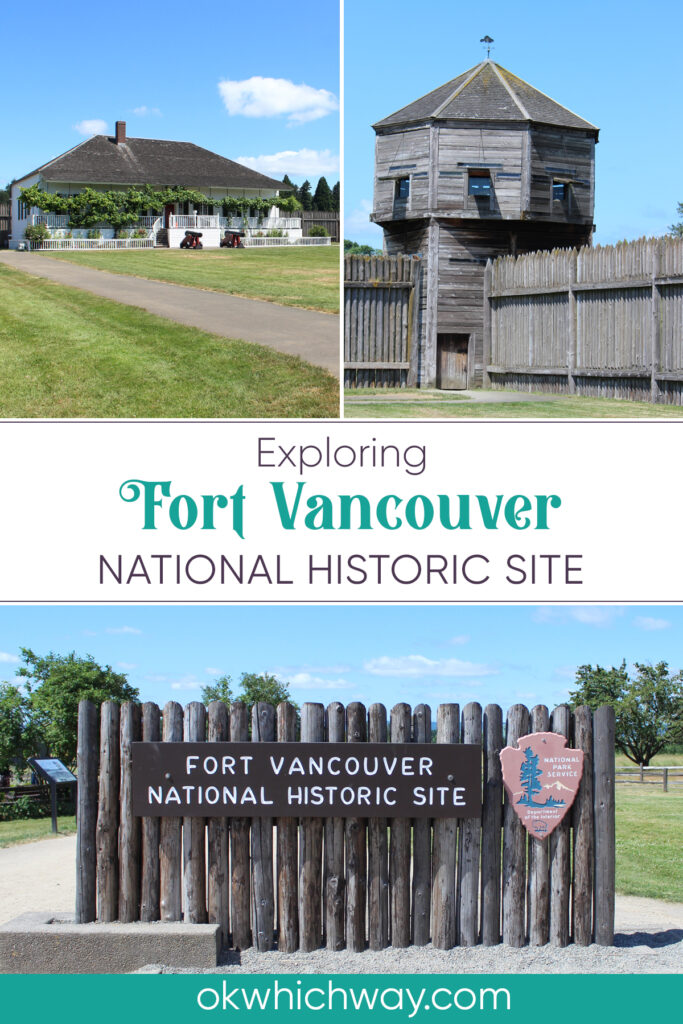
Forts in Washington & Oregon
